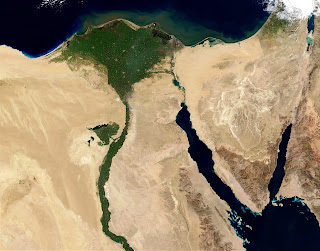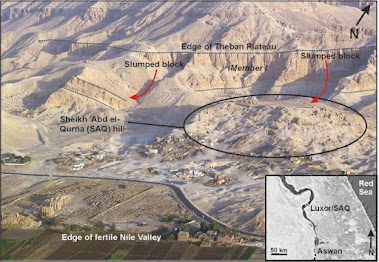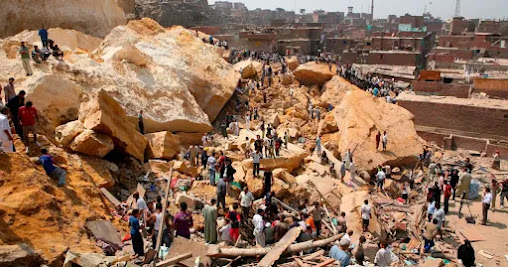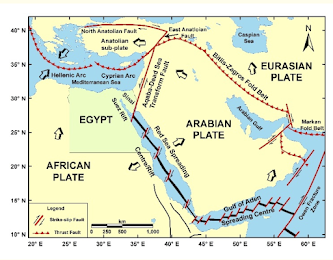Mass Wasting In Egypt
Egypt in General is classified as medium Hazard of Mass Wasting, according to the information that is currently available. This means that this area has rainfall patterns, terrain slope, geology, soil, land cover and (potentially) earthquakes that make localized landslides an infrequent hazard phenomenon. Based on this information, planning decisions such as project siting, project design, and construction methods, should take into account the potential for landslides. Further detailed information should be obtained to better understand the level of landslide susceptibility in your project area.
Climate change impact: Climate change is likely to alter slope and bedrock stability through changes in precipitation and/or temperature. It is difficult to determine future locations and timing of large rock avalanches, as these depend on local geological conditions and other non-climatic factors.
For example Theban Necropolis, near Luxor, Egypt, (Figure 1) is best known as the burial site of the kings, queens and nobles of Pharaonic Egypt, it is also the site of several paleo-landslides. The largest of these landslides that has been identified is the complex bedrock mega-landslide of Sheik 'Abd el-Qurna (Figure 2). The hill known as Sheik 'Abd el-Qurna is both the location of the Tombs of the Nobles and the remains of a very large slump-block slide originating in the Theban Hills to the northwest (Figure 3). The Sheik 'Abd el-Qurna landslide is the result of slumping and translational block sliding of a large limestone block of the Thebes Formation, which overlays the weak Esna Shale. Failure of overlying competent bedrock underlain by weak or poorly indurated shale is a common mode of bedrock landslide failure around the world.
It is important to mention one more time that, many parts of Egypt are densely crowded, and packed with families who poured into the city from impoverish rural areas. Where some districts gold about 100,000 person per square miles, where citizens say they have suffered from decades of government neglect.
For example the land slide that took place in the town of "Manshiyet Nasser, on 2008, the village who is built with red bricks houses and unpaved narrow alley is very well known with its overcrowding, where entire families are squeezed into a single room. according to Reuters, the Massive rockslide that occurred resulted in 31 deaths and 23 injuries in this town in Cairo.
If we came to think, what are the major reasons of Mass Wasting. We will find that the poor mechanical properties and structural of most geological formations, the seismic characteristics of the territory, the intense rainfall as well as the human activities are the main causes of landslide. On the other hand, vast areas in the Western Desert of Egypt is covered by moving sands which can be considered an important event in natural disaster. Sand dunes to the north of the Nile Delta started to encroach the cultivated land. To avoid dune movement over areas of future development, the location should be proportional to the rate of barchan movement.
Resources:
Analysis of the Sheik Abd el-Qurna Landslide, Luxor, Egypt. Vignette Collection. (2016, November 15). Retrieved October 11, 2022, from https://serc.carleton.edu/vignettes/collection/25507.html#:~:text=The%20largest%20of%20these%20landslides,%2DQurna%20(Figure%202).
Shahine, A., & Elatrash, S. (2008, September 6). Killer landslide hits East Cairo Shanty Town. Reuters. Retrieved October 11, 2022, from https://www.reuters.com/article/us-egypt-landslide/killer-landslide-hits-east-cairo-shanty-town-idUSL629496520080906
Think hazard - arab republic of egypt - landslide. (n.d.). Retrieved October 11, 2022, from https://thinkhazard.org/en/report/40765-arab-republic-of-egypt/LS






This blogpost was so dense in info I really like the pictures that supported what you were saying although with the way you described the landslides, I could already imagine what they must have been like, but the pictures really accentuated what you were describing.
ReplyDeleteThis was a very informative blog with well-explained information. It was interesting to read about the mass waste of another country. I also liked how you used specific examples of mass waste from your country.
ReplyDelete